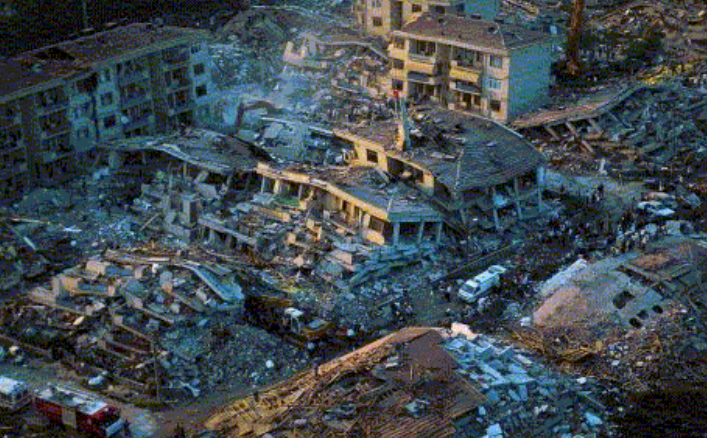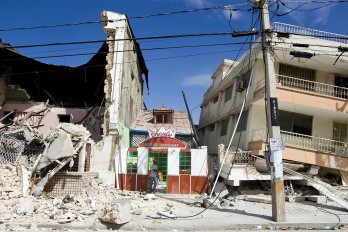Marmara Earthquake: Preparedness and Lessons 26 Years On

On August 17, 1999, the Marmara region of Türkiye was struck by a devastating 7.4-magnitude earthquake with its epicenter in Gölcük, Kocaeli. The tremor lasted 45 seconds, claiming more than 17,000 lives and leaving hundreds of thousands homeless. Istanbul, Yalova, and Sakarya were among the worst affected, with extensive building collapses highlighting structural weaknesses across the region. The disaster underscored Türkiye’s vulnerability, as the country lies on multiple active fault lines.
In the 26 years since, Türkiye has made significant progress in disaster management and earthquake resilience. Regulatory reforms introduced after 2000 required independent building inspections, reinforced construction standards, and promoted urban transformation projects. Public buildings and infrastructure have undergone strengthening, while educational programs now include disaster awareness, earthquake drills, and preparedness training from an early age.
Institutions such as the Turkish Red Crescent (Kızılay) and the Disaster and Emergency Management Authority (AFAD) have expanded their capacity. Kızılay can now provide urgent shelter for over 270,000 people and has shifted toward a community-based disaster management model. National strategies such as DASK, the compulsory earthquake insurance system, have been established to mitigate financial losses.
Despite progress, experts warn that Türkiye remains at high risk of another major earthquake in the Marmara region. Studies from the Kandilli Observatory indicate that significant fault segments beneath the Marmara Sea remain locked, storing sufficient elastic energy for a magnitude 7 to 7.5 event. Most older buildings constructed before 2000 still lack adequate resilience, and urban density complicates evacuation planning.
Geologists emphasize that preparedness cannot rely solely on regulations but must also include individual and community measures. Emergency kits, family disaster plans, and secure living environments are vital components of resilience. With historical data pointing to an inevitable major rupture, enhancing societal readiness remains the country’s greatest challenge.
Following a documentary highlighting Türkiye’s earthquake readiness and the steps implemented to enhance it.
For more information regarding retrofit ordinances reshaping seismic engineering check our recent article - here.
Sources: onlinelibrary.wiley.com, www.ifrc.org, hispanatolia.com, dailysabah.com
Want to read more like this story?
Experts answer: “Why did so many buildings collapse in Turkey?”
Feb, 16, 2023 | NewsFollowing Monday's terrible earthquakes, many of people are reportedly still trapped in the rubble...
UB earthquake engineers: building collapses in the Turkey-Syria earthquake were not unexpected
Feb, 16, 2023 | NewsA scene, shown in various videos, was taken following the 7.8-magnitude earthquake and subsequent t...
More than 20000 fatalities after Turkey-Syria earthquake
Feb, 11, 2023 | NewsAt least 20,000 people have now died as a result of the earthquakes that struck southwest Turkey an...

Earthquakes: five deadliest earthquakes ever recorded around the world
Feb, 25, 2022 | NewsEarthquakes are one of the most dangerous natural disasters. More than 100 earthquakes of the magni...
Magnitude 5.5 earthquake hit southern Turkish province of Adana
Jul, 26, 2023 | NewsA magnitude 5.5 earthquake struck the southern Turkish province of Adana. This recent quake occurre...
New Türkiye earthquake: one fatality and 110 injured as buildings collapse
Mar, 01, 2023 | NewsA magnitude-5.6 earthquake that struck Turkey's southeast on Monday claimed one life, injured 110 p...
Earthquake in Iran’s Khoy: at least three fatalities and hundreds injuries
Feb, 03, 2023 | NewsAt least three people died and hundreds hurt as a result of a 5.9-magnitude earthquake that struck...
Changes in magnetic field along fault lines preceded major earthquakes in California according to a recent case-study
Oct, 20, 2022 | NewsResearchers have tried for decades to determine whether there is a reliable precursor that can act...
A 5.5 magnitude earthquake struck southern Iran
Oct, 19, 2023 | NewsA 5.5 magnitude earthquake struck the southern region of Hormozgan Province in Iran on Tuesday morn...
Trending

Vertical gardens in Mexico City to combat pollution

Characteristics of Load Bearing Masonry Construction

Taipei 101’s impressive tuned mass damper

Morocco Implements Landmark Dam Perforation to Combat Water Stress in Marrakech

Dutch greenhouses have revolutionized modern farming



